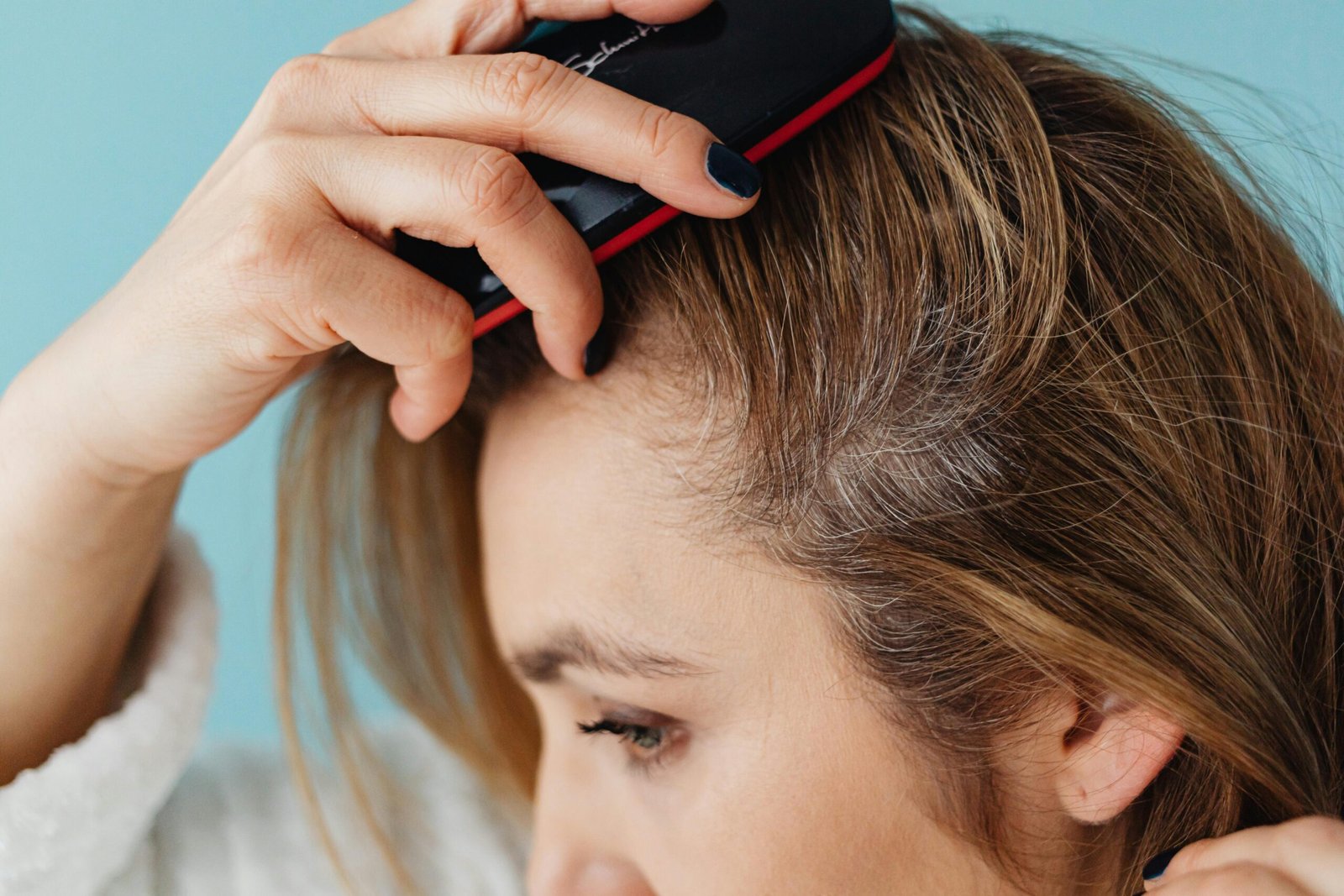Hair loss can sneak up on you. One day your hairline feels solid, then suddenly you notice thinning near the crown or your part looks wider. It can be stressful figuring out what to do next. And when you start searching for solutions, you’ll usually run into two big options: PRP therapy and hair transplant surgery.
Both treatments can help bring back fullness, but they work very differently. And they fit different situations. This guide walks you through the basics in plain language, so you can choose what aligns with where you are and what you want.
Quick Breakdown: PRP vs Hair Transplant
PRP Therapy
PRP uses your own blood. A small amount is drawn, spun in a centrifuge to separate the platelet-rich plasma, and then injected into thinning areas. Those platelets contain growth factors your body already uses for repair, so this encourages weaker follicles to start producing stronger hair again.
- No surgery
- No stitches
- Very little downtime
- Gradual, steady improvement
Think of PRP as a way to help the hair you still have look thicker and healthier.
Hair Transplant Surgery
A hair transplant takes healthy follicles from the back or sides of your head and moves them to spots where hair has thinned or disappeared. A surgeon places these grafts one by one, so there’s artistry involved.
- It is a surgical procedure
- You’ll need time to heal
- Great for noticeable or advanced hair loss
- Results last a long time because those transplanted hairs are genetically stronger
This is rebuilding coverage, not just improving it.
What the Procedures Actually Look Like
| Feature | PRP Therapy | Hair Transplant |
| Time in the chair | Around 45 to 60 minutes | 4 to 8 hours |
| Anesthesia | Usually none or very light numbing | Local anesthesia |
| Incisions | None | Yes, tiny incisions to place follicles |
| Downtime | Go back to normal life the same day | Visible healing for about one to two weeks |
| Sensation | Mild pressure or tenderness | Some soreness or swelling during recovery |
| When you see results | Gradual over 3 to 6 months | Full growth appears in 6 to 12 months |
PRP is a quick appointment. Some people book them on lunch breaks. A transplant is more of a “clear the day, take it slow afterward” type of procedure.
How Well They Work
PRP Therapy Results
PRP helps hair look thicker, stronger, and fuller. It’s best when thinning is still in the earlier stages. Results build slowly, which can actually feel natural and subtle.
Hair Transplant Results
Transplants create visible coverage where the scalp is showing. The new hair comes in gradually but once it’s there, it’s yours for the long haul. As long as you have enough donor hair, you can rebuild a receding hairline or fill in bald patches.
Neither treatment is magic. Both need realistic expectations. But both are proven and used worldwide every single day.
Cost: Let’s Be Real About Pricing
| Treatment | How you pay | Typical Investment |
| PRP Therapy | Per session, repeated over time | A few hundred to a bit over $1,000 per session |
| Hair Transplant | One-time surgical cost | Several thousand to tens of thousands depending on grafts needed |
PRP spreads the cost out.
Hair transplants hit your wallet upfront but often require only one major procedure.
Who Each Treatment Is Best For
PRP Might Be Right For You If:
- Your hair is thinning but not gone
- You want a natural and non-surgical option
- You’re okay with building results over time
A Hair Transplant Might Be Best If:
- You have noticeable or advanced hair loss
- You have strong donor hair available
- You’re comfortable with a recovery period
A quick rule of thumb:
If you can still see hair growing in the thinning area, PRP has a good chance of helping.
If the area is smooth or nearly smooth, a transplant is usually the better move.
Can You Combine Both?
Absolutely. A lot of clinics do PRP after a transplant. It helps the newly placed follicles take hold and strengthens the surrounding hair. Think of it like watering newly planted seeds.
Conclusion
Both PRP and hair transplants are solid options. The choice comes down to your stage of hair loss, how fast you want results, your budget, and whether you’re open to surgery.
- If you’re catching hair loss early and want to support what you have, PRP is gentle, natural, and simple.
- If you’re farther along and want noticeable, lasting coverage, a hair transplant can rebuild your hairline and density in a meaningful way.
Talking with a hair restoration specialist helps you get a customized plan that actually fits your situation rather than guessing based on photos online.
Frequently Asked Questions
- Which treatment shows results sooner?
PRP builds slowly over a few months. Transplants take longer to show growth but often create more dramatic change once the hair grows in. - How long do results last?
PRP requires maintenance sessions to keep the improvement going. Transplanted hair usually stays for the long term because it’s genetically more resistant to thinning. - Does PRP hurt?
Most people feel mild pressure or tenderness during injections. It’s uncomfortable, not unbearable. Hair transplants involve local anesthesia, so the procedure is comfortable, but recovery can feel sore or tight for a few days. - Can I use PRP to support a hair transplant?
Yes. Many surgeons include PRP as part of the healing and strengthening process. - How do I choose between the two?
Look at your stage of hair loss. If there’s still hair in the area, PRP may help thicken it. If the area is mostly bare, a transplant is more effective. A consultation gives clarity fast.

